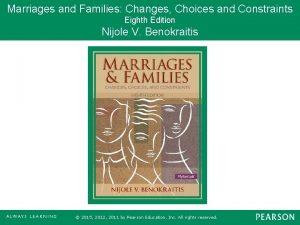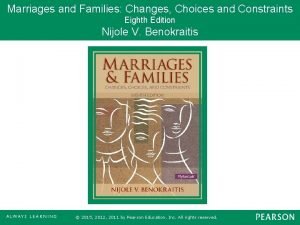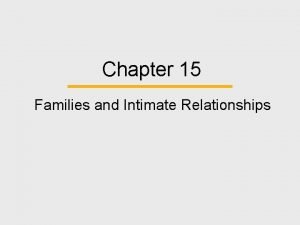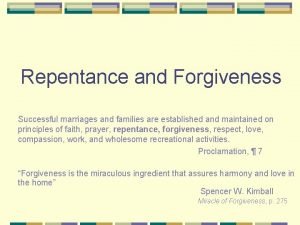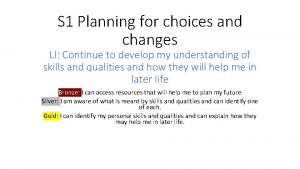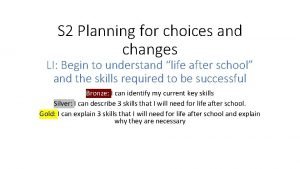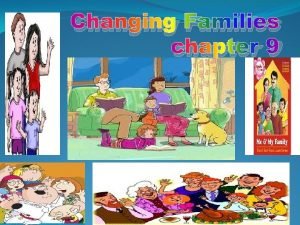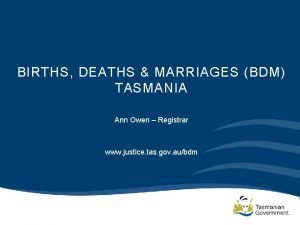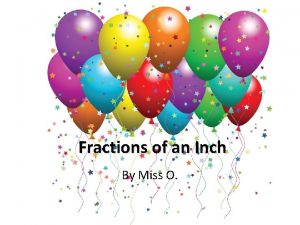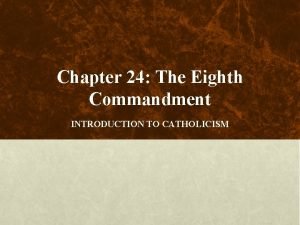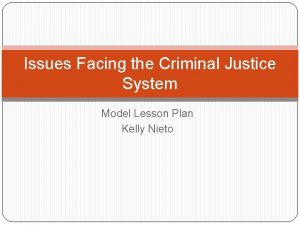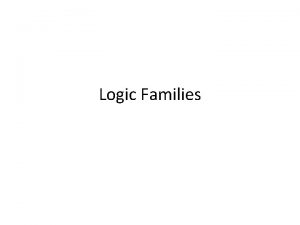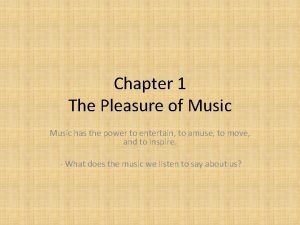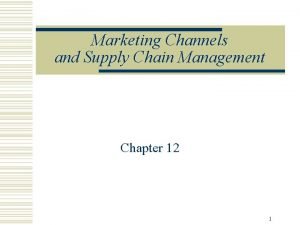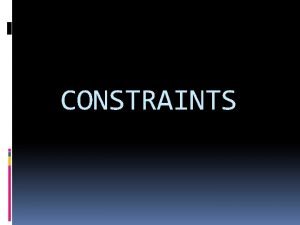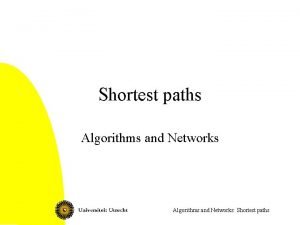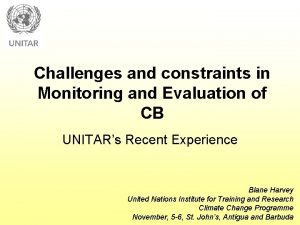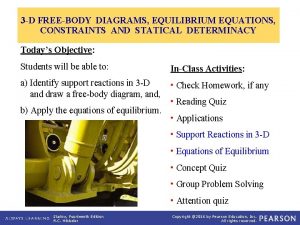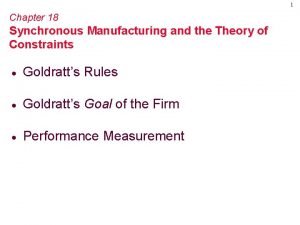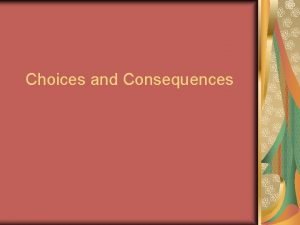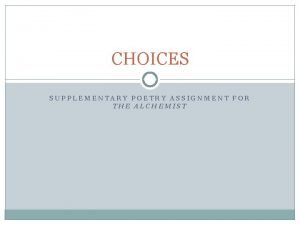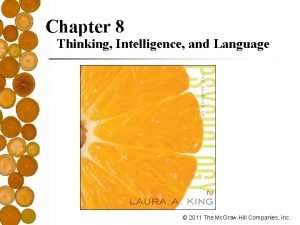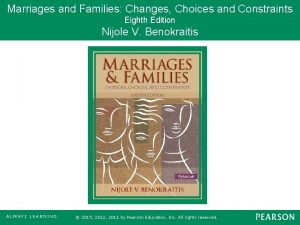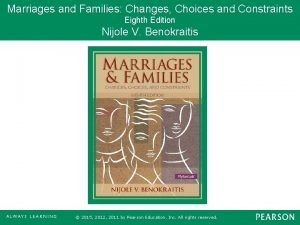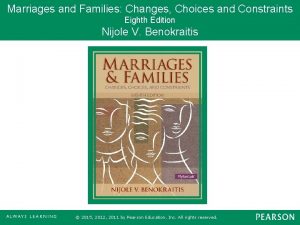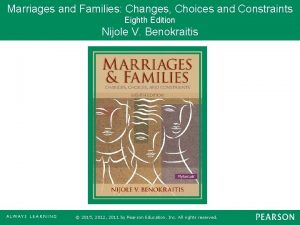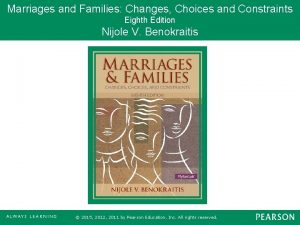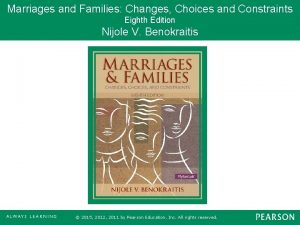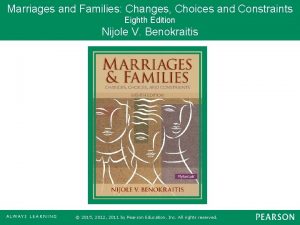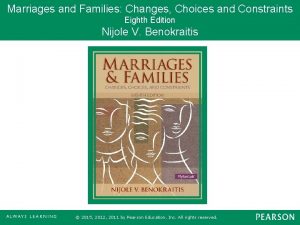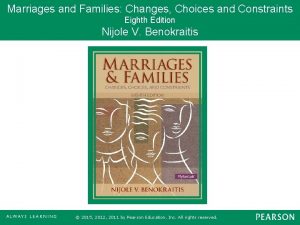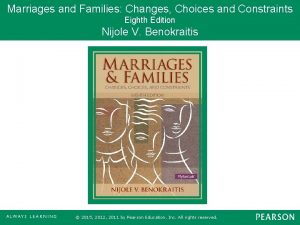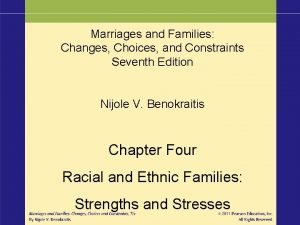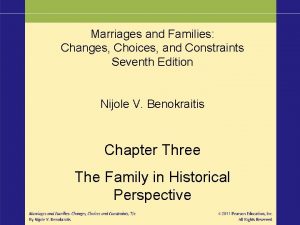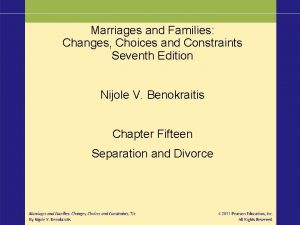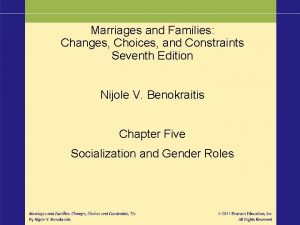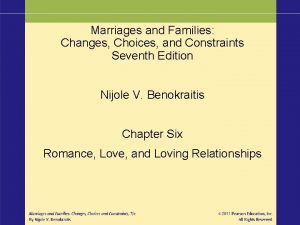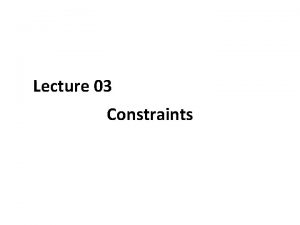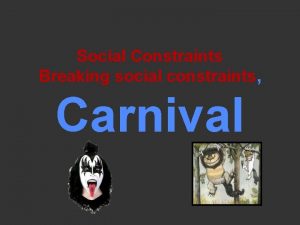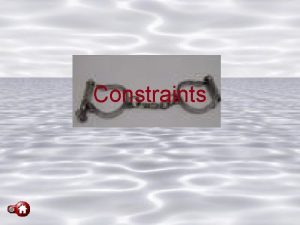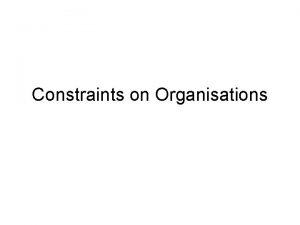Marriages and Families Changes Choices and Constraints Eighth

















































- Slides: 49

Marriages and Families: Changes, Choices and Constraints Eighth Edition Nijole V. Benokraitis © 2015, 2012, 2011 by Pearson Education, Inc. All rights reserved.

Chapter 11 TO BE OR NOT TO BE A PARENT: MORE CHOICES, MORE CONSTRAINTS Marriages and Families: Changes, Choices and Constraints, 8 e © 2015, 2012, 2011 by Pearson Education, Inc. All rights reserved.

Becoming a Parent • Some benefits and costs of having children • Some joys and tribulations of pregnancy • Some effects of parenthood Marriages and Families: Changes, Choices and Constraints, 8 e © 2015, 2012, 2011 by Pearson Education, Inc. All rights reserved.

Becoming a Parent • Partners have different reactions to pregnancy – Planners – Acceptance-of-fate couples – Ambivalent couples – Yes-no couples Marriages and Families: Changes, Choices and Constraints, 8 e © 2015, 2012, 2011 by Pearson Education, Inc. All rights reserved.

Some Benefits and Costs of Having Children • Benefits – Children bring love and affection – Children bring fulfillment and a sense of satisfaction • Costs – Raising children is expensive – Economic and social costs Marriages and Families: Changes, Choices and Constraints, 8 e © 2015, 2012, 2011 by Pearson Education, Inc. All rights reserved.

Figure 11. 1 - Yearly Cost of Raising a Child under Age 2, 2012 Source: Based on Lino, 2013, Table 1 Marriages and Families: Changes, Choices and Constraints, 8 e © 2015, 2012, 2011 by Pearson Education, Inc. All rights reserved.

Some Joys and Tribulations of Pregnancy • Pregnancy – Exciting and happy when planned – Arouses anxiety about caring and providing for the baby • Physical discomforts experienced by expectant mothers – Nausea, heartburn, and insomnia – Shortness of breath, painful swelling of the breasts, and fatigue Marriages and Families: Changes, Choices and Constraints, 8 e © 2015, 2012, 2011 by Pearson Education, Inc. All rights reserved.

Some Effects of Parenthood • Marital satisfaction decreases • Individual’s role as parent takes priority over other roles • Mothers and fathers face different challenges with their newborns – Postpartum depression (PPD): Serious illness that occurs up to a year after childbirth • Fathers experience it too Marriages and Families: Changes, Choices and Constraints, 8 e © 2015, 2012, 2011 by Pearson Education, Inc. All rights reserved.

Birthrates in the United States and Globally • How birthrates are changing • Why birthrates are changing Marriages and Families: Changes, Choices and Constraints, 8 e © 2015, 2012, 2011 by Pearson Education, Inc. All rights reserved.

How Birthrates Are Changing • Total fertility rate (TFR): Average number of children born to a woman during her lifetime • Fertility rate: Number of live children born per year per 1, 000 women ages 15 to 44 Marriages and Families: Changes, Choices and Constraints, 8 e © 2015, 2012, 2011 by Pearson Education, Inc. All rights reserved.

Figure 11. 2 - U. S. Fertility Rates, 1930– 2012 Sources: Based on Hamilton et al. , 2009, 2012, Figure 1. Marriages and Families: Changes, Choices and Constraints, 8 e © 2015, 2012, 2011 by Pearson Education, Inc. All rights reserved.

Figure 11. 3 - Percent of Births to Unmarried Women, by Race and Ethnicity, 2011 Source: Based on Shattuck and Kreider, 2013, Table 2. Marriages and Families: Changes, Choices and Constraints, 8 e © 2015, 2012, 2011 by Pearson Education, Inc. All rights reserved.

Why Birthrates Are Changing Macro-level factors • Economic recessions • Immigrant women • Access to health care reduces Micro-level factors • Increase in number of child free couples • Not wanting more that two children fertility • Publicly funded family planning services • Social class and women’s • Social contexts • Postponing marriage • Birth spacing participation in the labor force Marriages and Families: Changes, Choices and Constraints, 8 e © 2015, 2012, 2011 by Pearson Education, Inc. All rights reserved.

Preventing Pregnancy • Unintended pregnancy • Pregnancy intentions • Contraception usage Marriages and Families: Changes, Choices and Constraints, 8 e © 2015, 2012, 2011 by Pearson Education, Inc. All rights reserved.

Unintended Pregnancy • Pregnancy that is either mistimed or unwanted • Incurs emotional costs – Raising unwanted children – Man walking out on his pregnant girlfriend – Increased fathers’ depressive symptoms – Decreased mothers’ happiness Marriages and Families: Changes, Choices and Constraints, 8 e © 2015, 2012, 2011 by Pearson Education, Inc. All rights reserved.

Pregnancy Intentions • People are not sex educated • Not all teenagers want to avoid a pregnancy • Ambivalence about having an unintended pregnancy Marriages and Families: Changes, Choices and Constraints, 8 e © 2015, 2012, 2011 by Pearson Education, Inc. All rights reserved.

Contraception Usage • Contraception: Prevention of pregnancy by behavioral, mechanical, or chemical means • Varies depending on: – Gender – Age at first sex – Race-ethnicity – Social class Marriages and Families: Changes, Choices and Constraints, 8 e © 2015, 2012, 2011 by Pearson Education, Inc. All rights reserved.

Postponing Parenthood • Why are many people postponing parenthood? • Some characteristics of older parents Marriages and Families: Changes, Choices and Constraints, 8 e © 2015, 2012, 2011 by Pearson Education, Inc. All rights reserved.

Why Are Many People Postponing Parenthood? Micro-level factors • • Daunting jobs and careers Single women don’t want a child on their own Attitudes about the ideal family size have changed Women who enjoy their jobs are reluctant to take on balancing child rearing and paid work Macro-level factors • • Economic reasons Disturbed by high divorce rate Women’s reduced concerns about their biological clock Abysmal family leave policies, no national child care programs, and rigid work schedules • Higher educated women delay childbearing Marriages and Families: Changes, Choices and Constraints, 8 e © 2015, 2012, 2011 by Pearson Education, Inc. All rights reserved.

Some Characteristics of Older Parents Advantages • More likely to be married and highly educated • Higher salaries, better health benefits Disadvantages • Children face greater health risks • Pregnant women in their forties are at greater risk of having a baby with Down syndrome Marriages and Families: Changes, Choices and Constraints, 8 e © 2015, 2012, 2011 by Pearson Education, Inc. All rights reserved.

Infertility • • • Reasons for infertility Reactions to infertility Common medical treatments for infertility High-tech treatments for infertility Genetic engineering: Its benefits and costs Marriages and Families: Changes, Choices and Constraints, 8 e © 2015, 2012, 2011 by Pearson Education, Inc. All rights reserved.

Infertility • Inability to conceive a baby • Often goes undiagnosed until: – Couple has had at least one year of unprotected intercourse – Woman has had multiple miscarriages Marriages and Families: Changes, Choices and Constraints, 8 e © 2015, 2012, 2011 by Pearson Education, Inc. All rights reserved.

Reasons for Infertility Female infertility • Failure to ovulate • Blockage of the fallopian Male infertility • Sluggish sperm or a low sperm count • Chemical pollutants tubes • Pelvic inflammatory disease (PID) • Injury to the testicles or scrotum • Chlamydia • Infections • Endometriosis • Testicular varicose veins • Endocrine disorders • Substance abuse Marriages and Families: Changes, Choices and Constraints, 8 e © 2015, 2012, 2011 by Pearson Education, Inc. All rights reserved.

Reactions to Infertility • Women feel – Stigma and psychological distress – Grief and guilt – Sense of violation • Men find it difficult to cope • Fewer than half of women with fertility problems seek medical help Marriages and Families: Changes, Choices and Constraints, 8 e © 2015, 2012, 2011 by Pearson Education, Inc. All rights reserved.

Common Medical Treatments for Infertility • Artificial insemination: Medical procedure in which semen is introduced artificially into the vagina or uterus during ovulation • Fertility drugs: Medications that stimulate the ovaries to produce eggs Marriages and Families: Changes, Choices and Constraints, 8 e © 2015, 2012, 2011 by Pearson Education, Inc. All rights reserved.

High-Tech Treatments for Infertility • • • Assisted reproductive technology In vitro fertilization (IVF) Surrogacy Egg freezing Preimplantation genetic diagnosis (PGD) Marriages and Families: Changes, Choices and Constraints, 8 e © 2015, 2012, 2011 by Pearson Education, Inc. All rights reserved.

Genetic Engineering: Its Benefits and Costs Benefits • Couples who can’t have children have can have them • Women suffering from cancer can freeze their eggs before treatment Costs • Increased risk of birth defects • Treatments are expensive • Parents’ and scientists’ right to create designer babies • Use of sperm with serious • Helps detect prenatal genetic disorders and abnormalities genetic diseases • Babies have more than two parents Marriages and Families: Changes, Choices and Constraints, 8 e © 2015, 2012, 2011 by Pearson Education, Inc. All rights reserved.

Embryo Mix-Up • The video shows a couple’s story caught in an embryo mix-up http: //media. pearsoncmg. com/ph/hss/SSA_SHAR ED_MEDIA_1/sociology/videos/Apcontent/embryo _mix_up. html Marriages and Families: Changes, Choices and Constraints, 8 e © 2015, 2012, 2011 by Pearson Education, Inc. All rights reserved.

Adoption: The Traditional Solution to Infertility • • • Open and closed adoption Transracial adoption Adoption by same-sex couples International adoption Some rewards and costs of adoption Marriages and Families: Changes, Choices and Constraints, 8 e © 2015, 2012, 2011 by Pearson Education, Inc. All rights reserved.

Adoption: The Traditional Solution to Infertility • Taking a child into one’s family through legal means and raising her or him as one’s own • Children’s biological parents may be: • Dead • Missing • Unable or unwilling to provide appropriate care Marriages and Families: Changes, Choices and Constraints, 8 e © 2015, 2012, 2011 by Pearson Education, Inc. All rights reserved.

Open and Closed Adoption Open adoption • Sharing information and maintaining contact between biological and adoptive parents throughout the child’s life Closed adoption • Records of the adoption are kept sealed • Birth parent is not involved in the adoptee’s life • Child has no contact with the biological parents or little, if any, information about them Semi-open adoption • There is communication between the adoptive parents, birth parents, and adopted children, but through a third party Marriages and Families: Changes, Choices and Constraints, 8 e © 2015, 2012, 2011 by Pearson Education, Inc. All rights reserved.

Pros of Adoption Types Closed Adoptions Semi-Open Adoptions Birth parents have a sense of closure Privacy for birth parents while providing some information Birth parents can develop a relationship with the child as she or he grows Adoptive parents are safe from the interference by birth parents Greater sense of control for adoptive parents Adoptive parents have a better understanding of the child’s history Adopted children are safe from unstable or emotionally disturbed birth parents Adopted children don’t fantasize about birth parents Adopted children are less likely to feel abandoned Marriages and Families: Changes, Choices and Constraints, 8 e © 2015, 2012, 2011 by Pearson Education, Inc. All rights reserved.

Cons of Adoption Types Closed Adoptions Semi-Open Adoptions Lack information about their child’s wellbeing can be distressing for birth parent Due to contact with Disappointment if adoptive family birth the adoptive family fails parents may experience to meet expectations more distress No access to much medical information about the birth family Dealing with troubling communication between birth parents and an adopted child Difficulties dealing with emotionally disturbed birth parents Children may experience identity confusion Children may want more information than third parties are willing to divulge Children may feel rejected if contact with birth parents ceases Marriages and Families: Changes, Choices and Constraints, 8 e Open Adoptions © 2015, 2012, 2011 by Pearson Education, Inc. All rights reserved.

Transracial Adoption • MEPA supports transracial adoption, but this policy has been controversial • Cause of opposition – Children are alienated from their culture of origin Marriages and Families: Changes, Choices and Constraints, 8 e © 2015, 2012, 2011 by Pearson Education, Inc. All rights reserved.

Adoption by Same-Sex Couples • Tends to be disproportionately white and with high income and education levels – Reasons for pursuing parenthood echo those of heterosexuals Marriages and Families: Changes, Choices and Constraints, 8 e © 2015, 2012, 2011 by Pearson Education, Inc. All rights reserved.

International Adoption • Preferred by Americans because of the short waiting period for adopting a child – 7 to 10 years in the United States • Has decreased recently because of: – Host countries’ curtailing international adoptions for cultural, political, and economic reasons Marriages and Families: Changes, Choices and Constraints, 8 e © 2015, 2012, 2011 by Pearson Education, Inc. All rights reserved.

Figure 11. 5 - International Adoptions in the United States, 1998– 2011 Source: U. S. Department of State, 2012. Marriages and Families: Changes, Choices and Constraints, 8 e © 2015, 2012, 2011 by Pearson Education, Inc. All rights reserved.

Rewards and Costs of Adoption Rewards Costs • Adoptive parents and abandoned children find people to love • Adoption provides a stable environment for children • Children have enriching family experiences • Process of adoption is expensive • Children have had serious medical and emotional problems • Parental aggravation is more common among adoptive parents Marriages and Families: Changes, Choices and Constraints, 8 e © 2015, 2012, 2011 by Pearson Education, Inc. All rights reserved.

Abortion • • Incidence and prevalence of abortion Who has abortions and why? Abortion safety Why abortion rates have decreased Marriages and Families: Changes, Choices and Constraints, 8 e © 2015, 2012, 2011 by Pearson Education, Inc. All rights reserved.

Abortion • Expulsion of an embryo or fetus from the uterus • Types – Natural - Spontaneous abortion/ or miscarriage – Medically induced Marriages and Families: Changes, Choices and Constraints, 8 e © 2015, 2012, 2011 by Pearson Education, Inc. All rights reserved.

Incidence and Prevalence of Abortion • 40 percent of the unintended pregnancies end in abortion • 33 percent of women have an abortion by age 45 • Abortion rate - Number of abortions per 1, 000 women ages 15 to 44 Marriages and Families: Changes, Choices and Constraints, 8 e © 2015, 2012, 2011 by Pearson Education, Inc. All rights reserved.

Who Has Abortions and Why? • Women who have an abortion have similar: – Demographic characteristics – Reasons • Reasons for abortion – Financial inability to support the baby – Experiencing a disruptive life event Marriages and Families: Changes, Choices and Constraints, 8 e © 2015, 2012, 2011 by Pearson Education, Inc. All rights reserved.

Figure 11. 7 - Who Has Abortions? Source: Based on Guttmacher Institute, 2013. Marriages and Families: Changes, Choices and Constraints, 8 e © 2015, 2012, 2011 by Pearson Education, Inc. All rights reserved.

Abortion Safety • Physical health – Abortion in first trimester doesn’t have any long term effects • Mental health – No causal link between abortion and subsequent mental health problems Marriages and Families: Changes, Choices and Constraints, 8 e © 2015, 2012, 2011 by Pearson Education, Inc. All rights reserved.

Why Abortion Rates Have Decreased • • Changing attitudes about abortion Effective use of contraceptives Fewer abortion services Restrictive laws and policies Marriages and Families: Changes, Choices and Constraints, 8 e © 2015, 2012, 2011 by Pearson Education, Inc. All rights reserved.

Figure 11. 8 - U. S. Adults’ Position on Abortion Source: Saad, 2013. Marriages and Families: Changes, Choices and Constraints, 8 e © 2015, 2012, 2011 by Pearson Education, Inc. All rights reserved.

Child Free By Choice • “Childless” versus “child free” • Why people choose to be child free Marriages and Families: Changes, Choices and Constraints, 8 e © 2015, 2012, 2011 by Pearson Education, Inc. All rights reserved.

Childless versus Child Free • Women can be: – Temporarily childless - Plan to have children in the future – Involuntarily childless - Fertility or other biological problems – Voluntarily childless - Deciding not to have children • Childless implies a lack or a loss, whereas child free connotes a choice Marriages and Families: Changes, Choices and Constraints, 8 e © 2015, 2012, 2011 by Pearson Education, Inc. All rights reserved.

Why People Choose to be Child Free • Reasons why people choose to be childfree – Demographic variables – Individual choices Marriages and Families: Changes, Choices and Constraints, 8 e © 2015, 2012, 2011 by Pearson Education, Inc. All rights reserved.
 Family of orientation
Family of orientation Marriages and families changes choices and constraints
Marriages and families changes choices and constraints Intimate relationships, marriages, and families 9th edition
Intimate relationships, marriages, and families 9th edition Successful marriages and families
Successful marriages and families Little families
Little families Summary sentence starters
Summary sentence starters Planning for choices and changes
Planning for choices and changes Write reasons for the changes in families class 4
Write reasons for the changes in families class 4 Tasmania birth deaths and marriages
Tasmania birth deaths and marriages Changes in latitudes, changes in attitudes meaning
Changes in latitudes, changes in attitudes meaning Physical and chemical changes
Physical and chemical changes Making marriages work
Making marriages work Transgender genogram symbols
Transgender genogram symbols Smart marriages
Smart marriages Kelsey grammer marriages
Kelsey grammer marriages The fifth, sixth, seventh, and eighth amendments protect *
The fifth, sixth, seventh, and eighth amendments protect * Anagram of eighth
Anagram of eighth Psychology eighth edition david g myers
Psychology eighth edition david g myers Matching planet rings
Matching planet rings Nearest quarter inch
Nearest quarter inch Psychology
Psychology 8th commandment catholic
8th commandment catholic Taj mahal wonder of the world
Taj mahal wonder of the world Anterior three quarter crown
Anterior three quarter crown Eighth amendment excessive bail
Eighth amendment excessive bail Eighth letter of the alphabet
Eighth letter of the alphabet Criminal justice lesson
Criminal justice lesson What's the 5th amendment
What's the 5th amendment Operations management eighth edition
Operations management eighth edition What are the characteristics of logic families
What are the characteristics of logic families Compare and contrast the bach and marsalis families
Compare and contrast the bach and marsalis families Compare and contrast the bach and marsalis families
Compare and contrast the bach and marsalis families Channel objectives and constraints
Channel objectives and constraints Difference between holonomic and nonholonomic constraints
Difference between holonomic and nonholonomic constraints Specifications and constraints
Specifications and constraints Improperly constrained
Improperly constrained Difference constraints and shortest paths
Difference constraints and shortest paths Difference constraints and shortest paths
Difference constraints and shortest paths Materiality constraint adalah
Materiality constraint adalah Challenges in monitoring and evaluation
Challenges in monitoring and evaluation Gtt design process
Gtt design process Constraints and statical determinacy
Constraints and statical determinacy Synchronous manufacturing and theory of constraints
Synchronous manufacturing and theory of constraints Choices and consequences examples
Choices and consequences examples Ap psych chapter 8
Ap psych chapter 8 Evaluating alternatives and making choices among them
Evaluating alternatives and making choices among them Career choices and preferences in hrm
Career choices and preferences in hrm Hard choices by jojoba mansell
Hard choices by jojoba mansell Chapter 8 thinking language and intelligence
Chapter 8 thinking language and intelligence Choices have consequences philosophy
Choices have consequences philosophy
